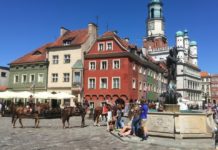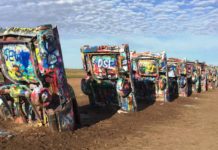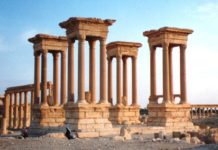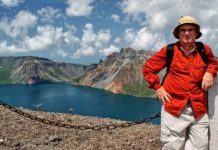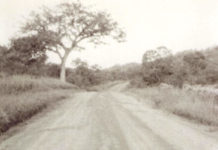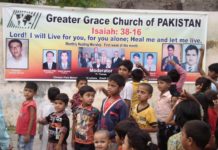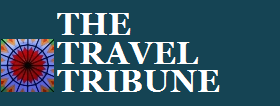[
]
It was a few days before Thanksgiving in 2001 when I was laid off from my job as a segment producer at TechTV, a cable television network that was apparently a little too cutting edge for its time. The 9/11 attacks had just taken place, and the dot-com bubble had burst with splattering force. Many people were losing their jobs.
I had saved up a nice chunk of money, so in 2002 I took an 11-month trip around all of Europe, some of the Middle East, and a small part of Africa. Throughout this trip, I maintained a comprehensive blog. In total, I visited 47 countries. Many of them were popular destinations like England, France, and Spain, but a few were countries that other travelers explicitly warned me to avoid at all costs. One of those countries was Syria.

I was only in Syria for a week, but it was one of the most memorable weeks of my life. Today, with all of the death and destruction taking place there, I thought some people might be curious about what it was like to travel through the country shortly after the 9/11 attacks and several years before the bloodshed we are witnessing today.
Some of the places I mention in my blog entry have been damaged or destroyed. It makes me sad to see what’s happened to such a beautiful country, and I hope someday tourists will be able to return.
ANTAKYA, TURKEY
OCTOBER 25, 2002
This will be my last entry before I cross into Syria. I was told that there is no Internet access available there because it’s forbidden. Therefore, I will probably not update this site until I get to Jordan or Egypt. I will try to post my whereabouts on my homepage if possible, but don’t count on it. Also, please avoid sending me emails during this time, as I probably won’t be able to answer them. Thanks for understanding.
ALEPPO – PALMYRA – DAMASCUS, SYRIA
OCTOBER 26 to OCTOBER 31, 2002
Perception vs. Reality
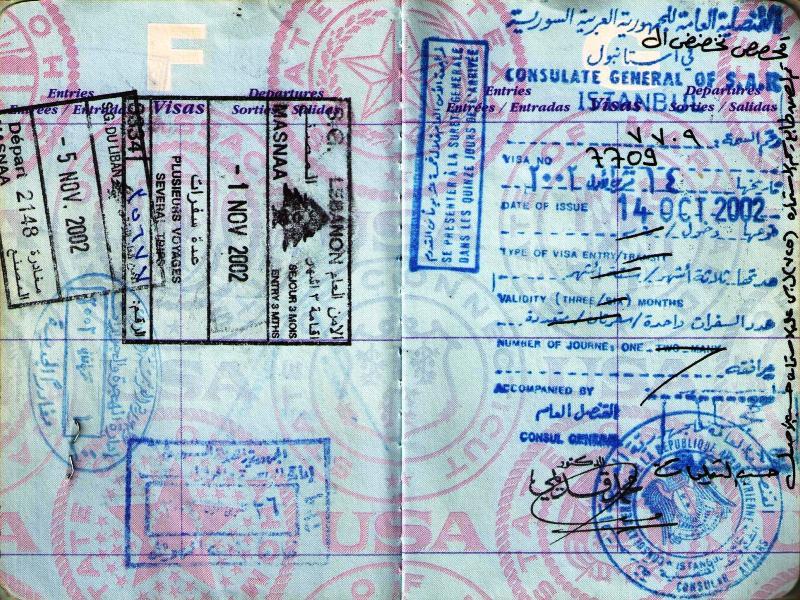
The bus ride from Antakya, Turkey to Aleppo, Syria cost 6,000,000 Turkish lira ($3.60) and took about four hours. Along the way, I had a nice conversation with Jo, an Australian girl who was working as a teacher in Ankara, Turkey. I also met a Lebanese man from Tripoli (Lebanon not Libya) who gave me his phone number and told me to call him if I went there.
The border crossing into Syria was interesting and painless. Trucks were backed up for miles. I’d love to know how long it takes for them to get across. I wouldn’t be surprised if they sat there for a couple days.
I saw a sign from the bus window that said “Wellcome to Syria” (their typo, not mine), and inside the customs office another friendly sign addressed arrivals as “Brother Traveler.” There was a customer service phone number available for anyone who had “complainments or comments about their border entry” (their typo, not mine).
So, I guess the question begging to be asked is, “What was Syria like?”
I could write volumes about my experiences there, but I have chosen to provide only the most relevant details.

Most Americans probably think Syria is a very dangerous place. After all, it’s located in the heart of the Middle East and is included on the Department of State’s list of state sponsors of terrorism. I’d like to remind you that Syria did not oppose the United States’ invasion of Iraq during the Gulf War, and they have repeatedly asked to be removed from that list.
People were unbelievably friendly and welcoming. I felt just as safe in Syria as anywhere I’ve been in the United States or Western Europe. All of the people I spoke to said that they did not hold me personally responsible for the actions of my government. Most Arabs were clearly disappointed with the United States’ ongoing bias against them in the Middle East conflict. The Syrians I spent time with expressed themselves very well and were quite opinionated.
Enough people wore blue jeans, so I didn’t feel out of place walking around in them. I saw women dressed in a wide variety of outfits. Some of them could have been right out of an American shopping mall, while others had every inch of their body, including their eyes, covered with a burka.
I noticed that Chiclets were available. Chewing gum seems quite popular in this part of the world, but when was the last time you had a Chiclet?
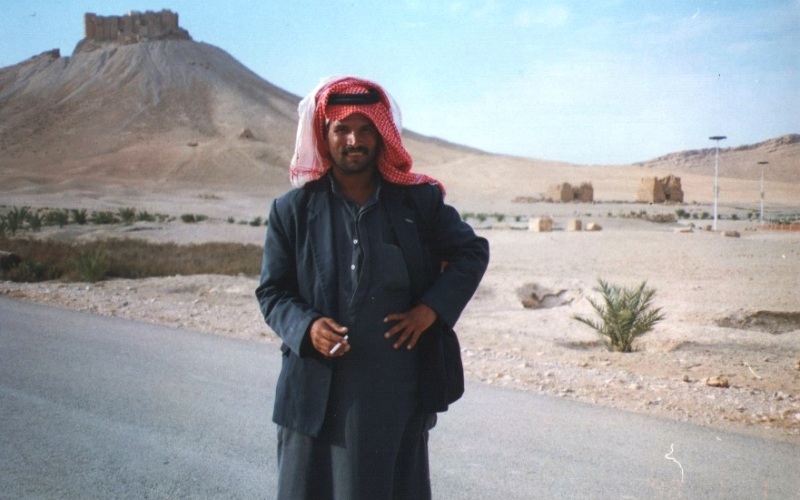
Here are some interesting things that are useful to know, if anyone reading this is planning on going to Syria:
- You won’t find any Western food chains – including McDonalds.
- You won’t find any ATMs, so bring a lot of cash.
- You won’t find Coca Cola or any of its products. You will, however, find Sport Cola – whatever that is.
- Very few shops accept credit cards. Those that do call a bank in Lebanon for approval of the transaction.

Outside of Damascus, Internet cafes were few and far between; in Damascus, there were several available. Yahoo! Mail was completely blocked nationwide, but I eventually found one place that used special software to get around the problem.
“Why can’t I use Yahoo! Mail?” I asked one cafe employee.
“I don’t know,” he replied coldly, “Why don’t you ask the government?”
Internet cafe workers were almost always visually monitoring my surfing activity. Some were obvious; others weren’t. At one location, I cleared the history folder, deleted the cookies, and emptied the temporary Internet files folder. The sole employee was more than eager to let me know that he saw what I had done.
“What do you think?” he chided, “that we are all hackers?”
At every Internet cafe I visited, I was unable to make a single change to my website.

Aleppo was a wonderful city that was fascinating from end to end. It claims to be the oldest inhabited city in the world.
I stayed at the Spring Flower Hotel in the New City. It was the only true backpacker spot in town, and it cost 300 Syrian pounds ($6.00) per night. It was a very cool place, but the neighborhood was a little dingy, and there were a good number of Russian prostitutes wandering around at night.
There must have been more than one hundred tire shops in the New City. I’m not exaggerating. Many blocks had several of them right next door to each other. How do they all stay in business?
Here are some of the highlights of my visit:
- The Citadel was a very old castle on top of a large, circular hill. It was interesting to explore and had wonderful views of the city. I climbed to the top and took a picture.
- Most Arab cities have a souq (market/bazaar), but the one in Aleppo was one of the best I’d ever seen. The harassment level of shop owners was tolerable compared with the souqs of Morocco.
- I bought a few souvenirs at Sebastian, a pleasant shop located across from the western wall of the Citadel. I am a terrible haggler, so I paid a lot more than I should have.
- Al-Faihaa (on Sharia Al-Baron) was an awesome falafel joint across the street from the movie theater. It’s considered a local institution in the same way Pink’s Hot Dogs is in Los Angeles.
- Jo (the Australian girl) and I had a nice dinner at Yasmeen House in the Christian Quarter. The atmosphere in the restaurant far surpassed the quality of the food.
- I met an American from Rochester, New York named Paul. He was traveling in the Middle East for six months with a budget of only $3,000.

Palmyra is an ancient Roman city that’s remarkably well-preserved. The ruins were far better than anything I saw in Italy. As the crow flies, it’s about 65 miles (105 km) from the Iraqi border, but one would never know it. The nearby town with the same name was a tiny little tourist trap.
I stayed at the New Afqa Hotel owned by a jovial, young dude named Maher. On the lobby wall was a magazine article written by a German woman. She said that he cheated at backgammon and offered tips on how to beat him. Oddly enough, Maher never lost a single game while I was there. I liked his blue jeans, though. The label said “Jeans Wear Jeans Best World.”
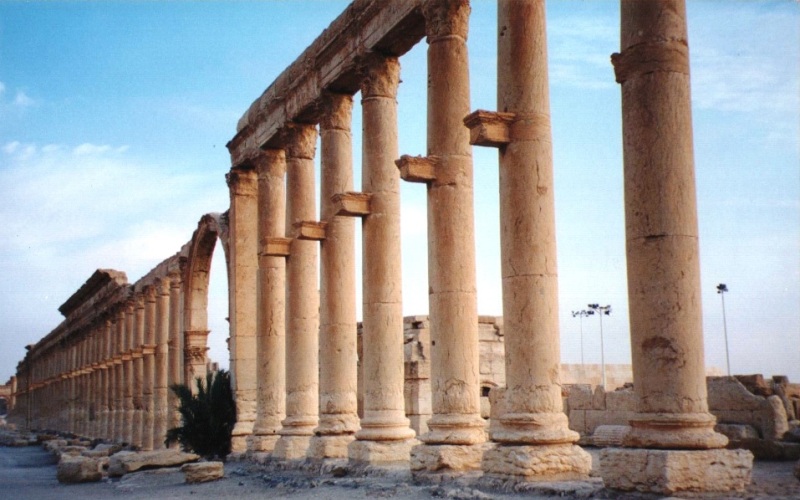
A team of Swedish teenagers were staying at the hotel. Two of the girls had long chains with fireproof balls on the end. They were able to skillfully spin them around in the air without crashing them into each other. One evening, they put on a show in the ancient Roman amphitheater. It was pitch black except for their fireballs flying through the air. It was incredibly cool to watch, and there were only ten people in the audience.
The food in Palmyra is notoriously bad, but I had a decent meal at Spring Restaurant (on Sharia Al-Quwatli). I dined on the roof under a tent and ate like a Bedouin. Of course, I had to remove my shoes and sit on the floor.
On the bus to Damascus, I ran into Adam and Megan, two Aussies that I had met at the Orient Restaurant in Göreme, Turkey. We shared a taxi to the city center and split the cost of a hotel room.
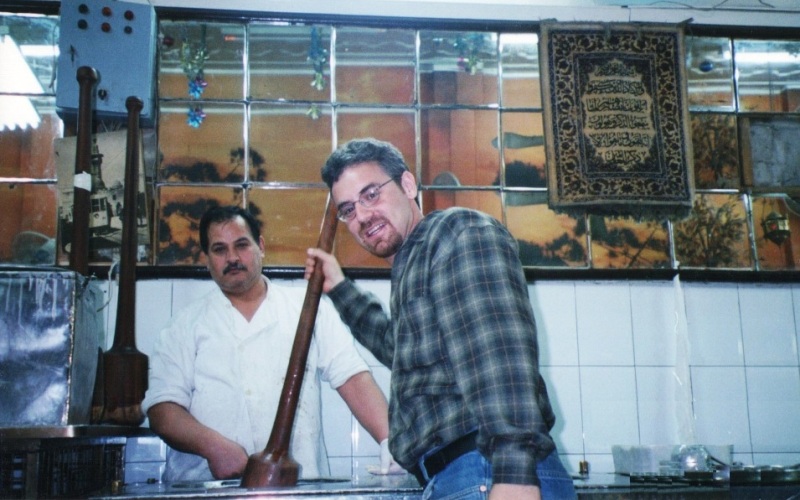
Damascus is the capital of Syria. It was a very busy place with an easily navigable souq. Here are some of the highlights:
- Bakdash (on souq Al-Hamidiyya) was an extremely busy ice cream shop with great ice cream and milk pudding. The man running the shop was kind enough to hand over his wooden pounder and let me bash the ice cream.
- Damascus’ souq was covered with a tin roof, and it was easy to get around. It had more of a mall atmosphere as opposed to a traditional one.
- Since non-Muslims are not allowed to visit Mecca, Saudi Arabia, the next best thing is a trip to the huge Umayyad Mosque in the center of the old city. It’s one of the holiest places in Islam and also one of the largest and oldest mosques in the world.
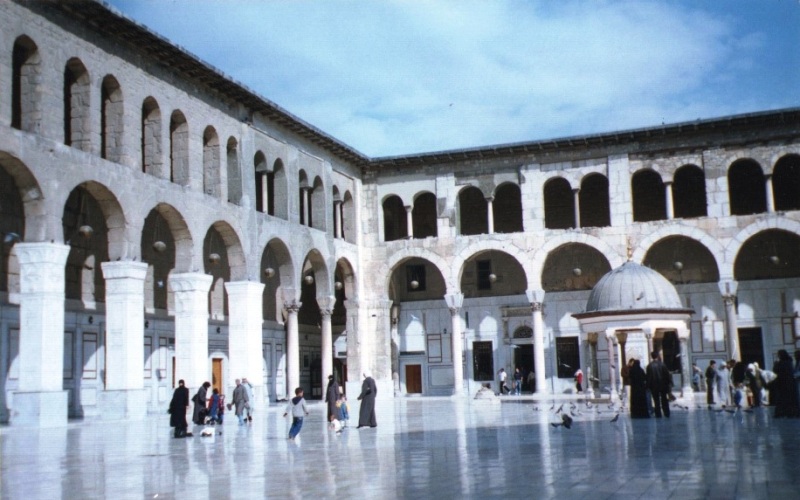
I stayed at two separate hotels; both were in the New City: The Hotel Saadeh which was completely forgettable, and the Al-Haramein Hotel (on Sharia Bahsa) which was more backpacker friendly.
Adam and I went to a hammam (bathhouse) for a sauna and massage. Women were not permitted to come inside this particular one. The masseur was a man of few words, but he managed to utter one sentence very clearly.
“I am very sorry for 11 September,” he said with sadness.
“It’s bad for the whole world,” I responded.
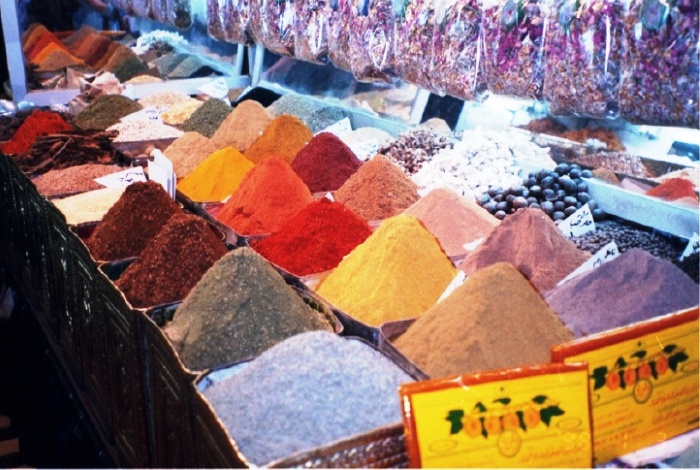
I had dinner at the Journalists’ Home Club Restaurant and Coffee House (next to Azem Palace) with Adam and Megan along with Marina and Michael, two people who had come to Damascus to take a six-month course in Arabic. Also joining us was a nice, young Syrian man who was about to move to the UK to continue his medical studies because he had been refused a visa to come to America. He was 80% deaf in one ear from a car bomb explosion during the civil war in Beirut, Lebanon.
DAMASCUS, SYRIA TO BEIRUT, LEBANON
NOVEMBER 1, 2002
Adam, Megan, and I took the bus from Damascus to Beirut. It cost 260 Syrian pounds ($5.32) and took about four hours including the border crossing. The biggest surprise was the Dunkin’ Donuts in the duty-free zone, but the bus driver did not provide us with enough time to sink our teeth into that desperately needed treat.
Getting into Lebanon from Syria was incredibly easy. I was able to get a visa at the border, and it didn’t cost me anything for three months with multiple entries. I was really surprised about this, and I guess it’s a sign that Lebanon is trying to encourage more people to come back to what used to be a major tourist destination.
Lebanon had a brutal civil war that started in 1975 and ended in the early nineties. During that difficult era, the country was also invaded by Israel. The troops left in May 2000. Needless to say, Lebanon was left in shambles, but today’s visitors will discover a nation that’s quickly pushed the past behind them and is rebuilding its infrastructure at warp speed.
Don’t think for one minute that Syria and Lebanon are exactly the same. Nothing could be further from the truth. All of the creature comforts that Syria lacked were available in abundance in Lebanon. Syria was a wonderful place because it was so different from the Western world, while Lebanon was a wonderful place because it’s influenced by the Western world.
BEIRUT, LEBANON TO AMMAN, JORDAN (VIA DAMASCUS)
NOVEMBER 5, 2002
I expected to travel alone from Beirut to Amman. I’ve noticed that I draw a lot more attention when I’m on my own than when I’m with others. Let’s face it, it’s not that common to see an American wandering around the Middle East with a 65-pound (30 kg) backpack strapped tightly to his body. I’d be shocked if people didn’t notice.
It became a nonissue as soon as I arrived at the Charles Helou Bus Terminal in Beirut. Standing there waiting for the same bus to Damascus was a guy from Iceland that I had met in Palmyra, Syria. He had a name that he himself couldn’t pronounce. To keep it simple, he pronounced it “CAT-in-eye.”
The trip from Beirut to Amman was completed in two phases:
Phase 1: The bus from Beirut to Damascus cost 7,000 Lebanese lira ($4.63) and took about four hours. At the Syrian border, I was able to purchase a transit visa on the spot. At first I thought the man asked for sixty dollars, but then I realized that he was only asking for sixteen dollars. I saved 44 bucks in a matter of seconds.
Phase 2: A bus from Damascus to Amman was available, but strange-name guy and I didn’t want to wait around two hours for it to leave. We opted to take a shared taxi for 440 Syrian pounds ($9.00). It was a little more expensive than the bus, but with fewer passengers, the border controls and the trip itself were much faster than they would have been otherwise.
The Syrian/Jordanian border was no problem at all. I had to purchase a visa for 10 Jordanian dinar ($14.12), and the exchange booth in the customs building was offering a pretty fair rate. A few people had their bags searched, but nobody asked me to open mine. Overall the trip was good, and despite a freak hail storm in the Syrian desert, we made it to Amman in a few short hours. ♦


